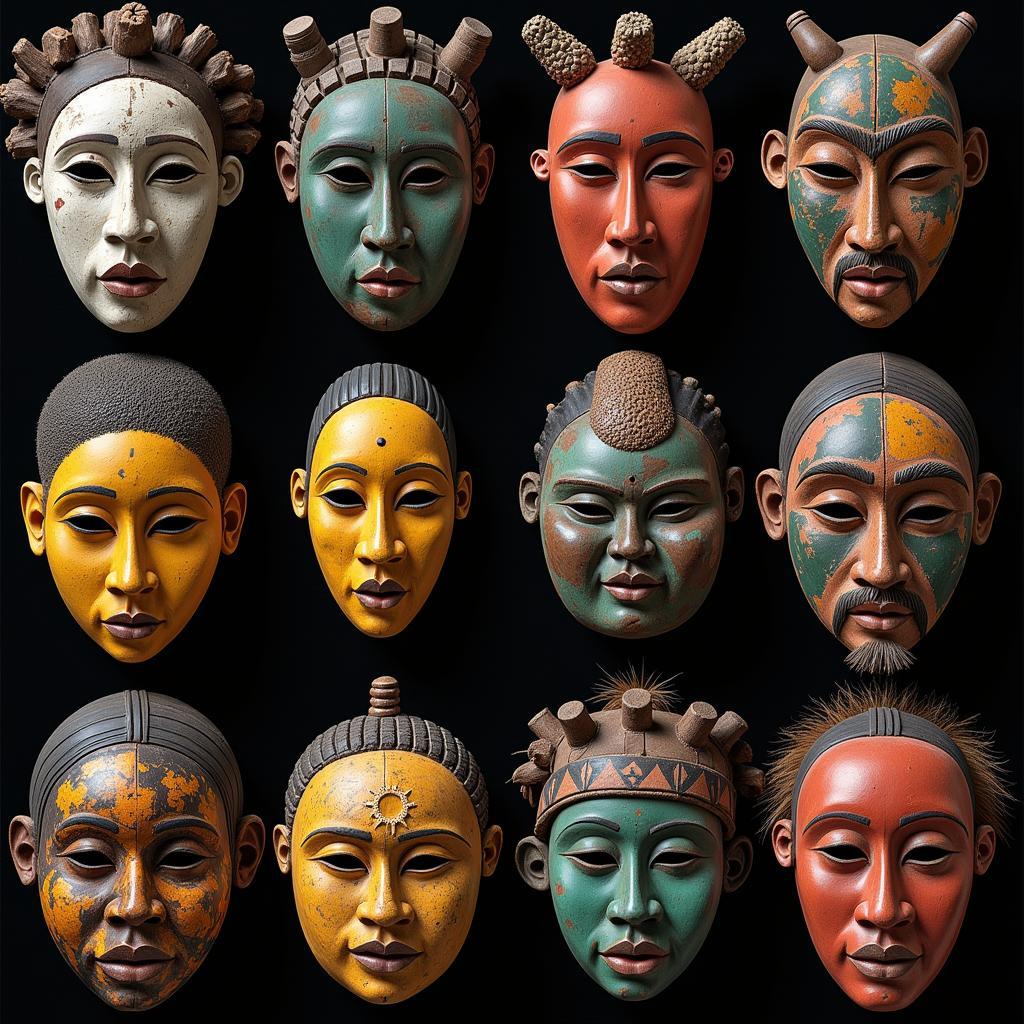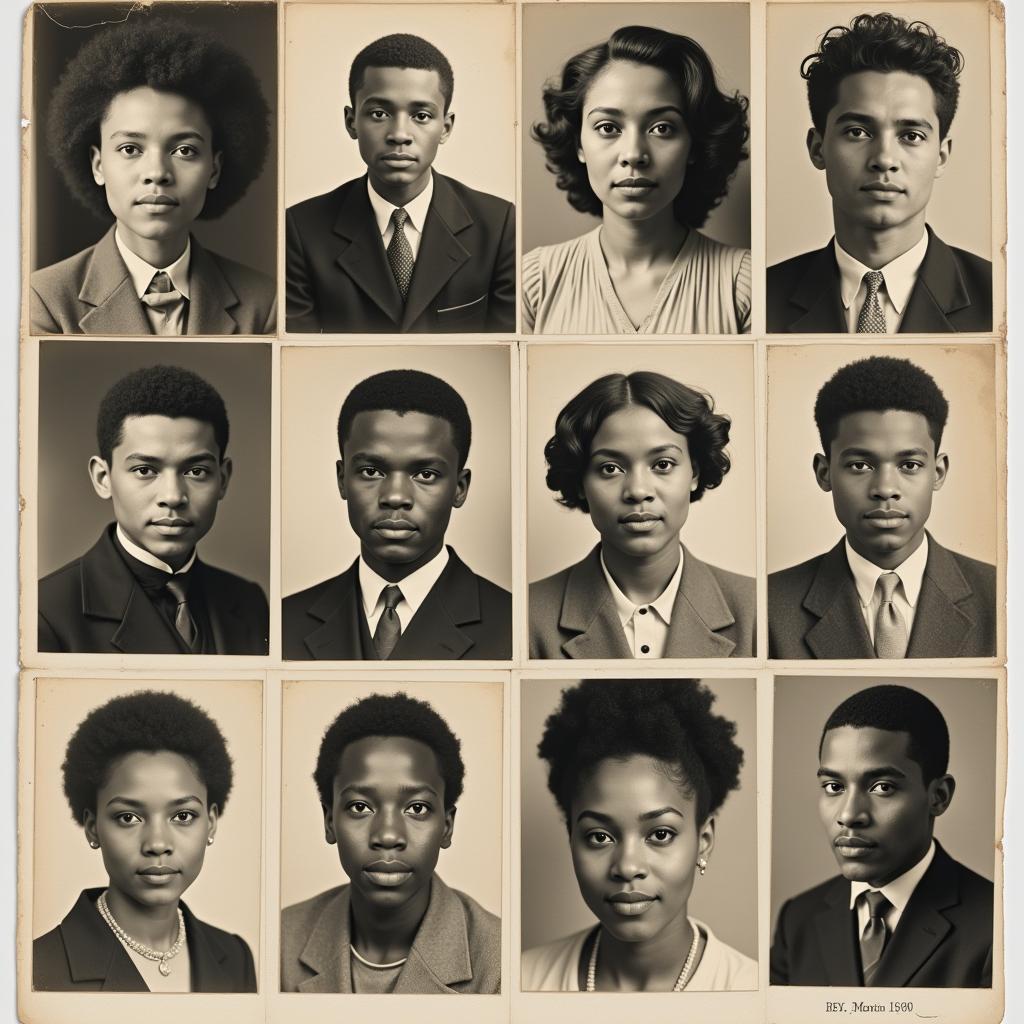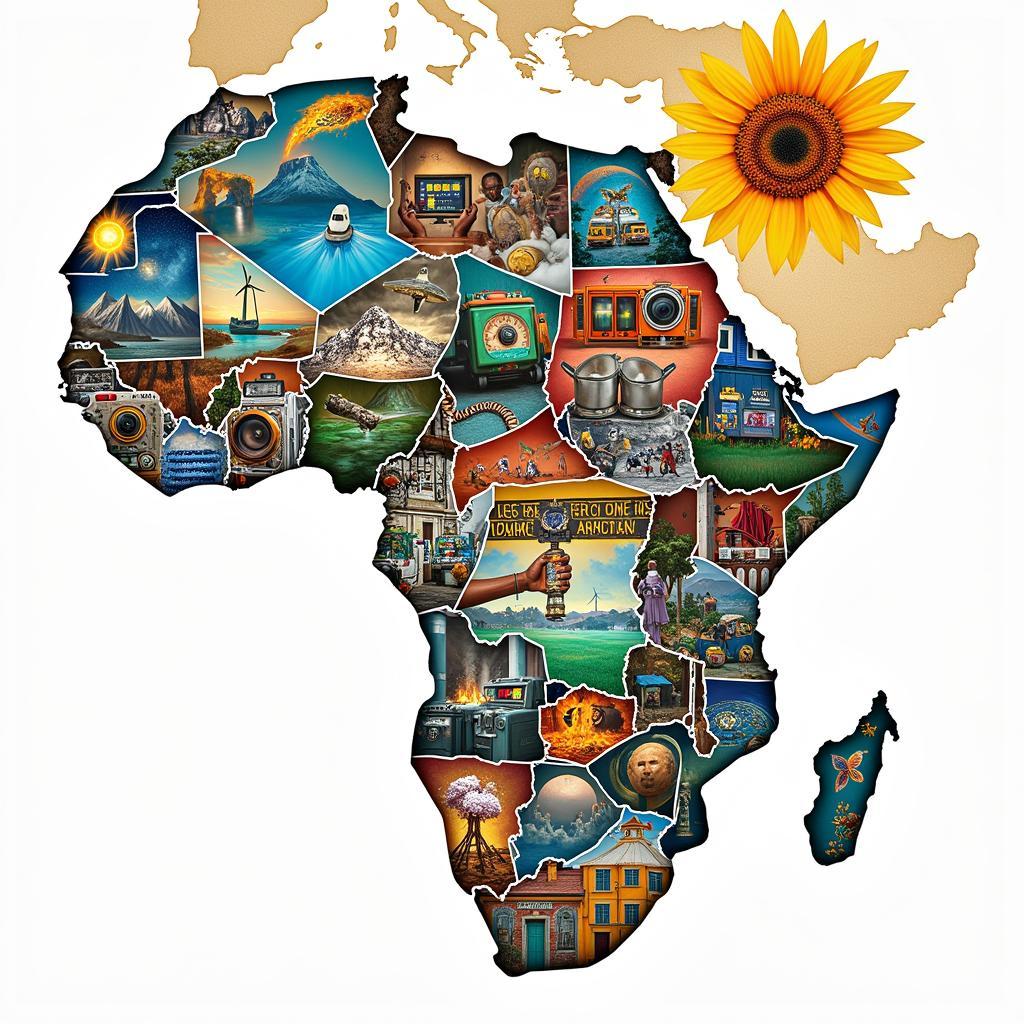Exploring the Diversity of African American Face Shapes
African American Face Shapes, like the diverse tapestry of the African diaspora itself, are a beautiful spectrum of variations and unique features. This article delves into the fascinating world of facial structures, celebrating the unique beauty found within the African American community. We’ll explore common characteristics, historical influences, and cultural significance, while debunking myths about racial homogeneity. Join us as we celebrate the captivating diversity of African American beauty.
The Rich Tapestry of African Ancestry
To understand the variety in African American face shapes, we must first acknowledge the immense diversity of the African continent itself. Africa is home to over 3,000 distinct ethnic groups, each with its own unique physical characteristics, including facial features.
 African Masks: A Celebration of Diversity
African Masks: A Celebration of Diversity
The transatlantic slave trade brought together people from various regions of Africa, blending these diverse genetic lineages. This mixing of heritage has resulted in a beautiful spectrum of facial features within the African American community, making it impossible to define a single “African American” look.
Common Characteristics and Variations
While there is no single “African American” face shape, certain characteristics are commonly observed, stemming from the diverse African gene pool. These can include:
- Fuller Lips: Often a defining feature, full lips are celebrated for their sensuality and beauty.
- Prominent Cheekbones: High, sculpted cheekbones are a striking feature, often contributing to a regal and elegant appearance.
- Wide-Set Eyes: Eyes can range in shape from almond to round, often set against a backdrop of beautifully melanated skin.
- Versatile Hair Textures: From tightly coiled curls to looser waves, African American hair is known for its versatility and unique textures.
It’s crucial to remember that these are just general observations, and the beauty of African American features lies in their incredible diversity. Facial structures can vary significantly, reflecting the multitude of ancestral backgrounds within the African American community.
Debunking Myths and Celebrating Individuality
It’s important to challenge the harmful misconception that race is a biological determinant of specific face shapes. The idea of a singular “African American” face shape is a myth rooted in racism and the historical effort to categorize and control people based on superficial traits.
 Historical Reflections: Diversity in Early 20th Century Portraits
Historical Reflections: Diversity in Early 20th Century Portraits
Each individual within the African American community possesses unique features shaped by a complex interplay of genetics, ancestry, and personal history. By embracing this diversity and celebrating individual beauty, we move beyond limiting stereotypes and acknowledge the rich tapestry of the African American experience.
The Cultural Significance of Beauty
Within the African American community, concepts of beauty extend beyond Eurocentric ideals. Historically, traditional African aesthetics often emphasized features like full lips, prominent foreheads, and strong noses. These features were celebrated as symbols of strength, fertility, and ancestral connection.
Today, there is a growing movement to reclaim and redefine beauty standards, embracing the diversity of African American features. From natural hairstyles to celebrating melanated skin, the African American community is actively shaping its own narrative of beauty, rooted in self-love and cultural pride.
Conclusion
Exploring the diversity of African American face shapes is a journey into the heart of a vibrant and beautiful community. By embracing individual features and challenging limiting stereotypes, we celebrate the rich tapestry of the African diaspora and the captivating spectrum of beauty it represents. The true beauty of African American features lies not in conformity to a single ideal, but in the unique stories and heritage etched upon each individual face.



